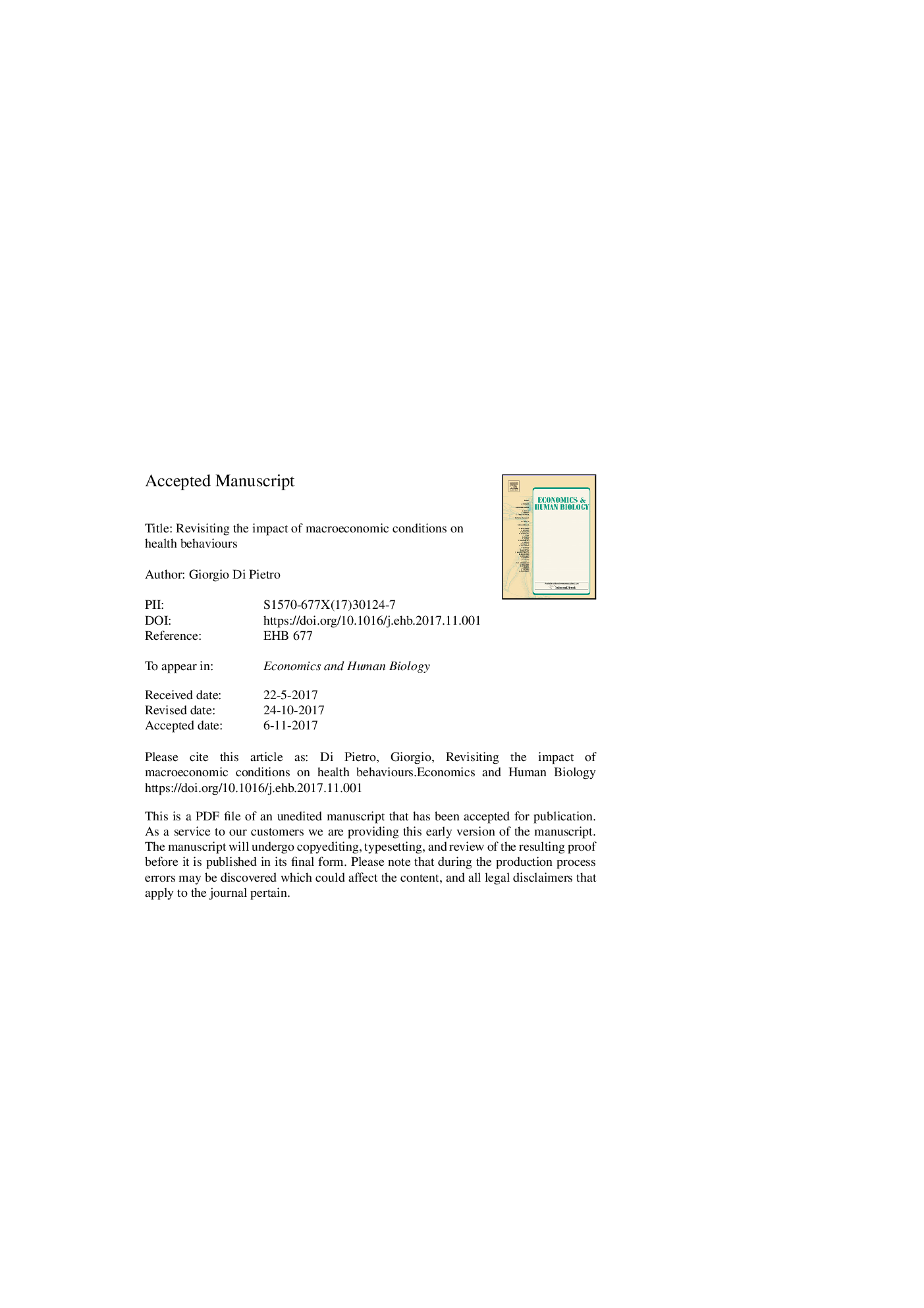| Article ID | Journal | Published Year | Pages | File Type |
|---|---|---|---|---|
| 7348346 | Economics & Human Biology | 2018 | 32 Pages |
Abstract
This paper estimates the average population effect of macroeconomic conditions on health behaviours accounting for the heterogeneous impact of the business cycle on individuals. While previous studies use models relying on area-specific unemployment rates to estimate this average effect, this paper employs a model based on area-specific unemployment rates by gender and age group. The rationale for breaking down unemployment rates is that the severity of cyclical upturns and downturns does not only significantly vary across geographical areas, but also across gender and age. The empirical analysis uses microdata from the Italian Multipurpose Household Survey on Everyday Life Issues. The estimates suggest that models employing aggregated and disaggregated unemployment rate measures as a proxy for the business cycle produce similar findings for some health behaviours (such as smoking), whereas different results are obtained for others. While using unemployment rates by gender and age group, fruits and/or vegetables consumption turns out to be procyclical (a 1pp increase in this unemployment rate decreases the probability of consuming at least five daily fruit and/or vegetable servings by 0.0016pp), the opposite effect, though statistically insignificant, is observed once general unemployment rates are used. While both models conclude that physical activity declines during economic downturns, the size of the procyclical effect is much smaller when employing disaggregated rather than aggregated unemployment rates (a 1pp increase in the unemployment rate by gender and age group decreases the probability of doing any physical activity by 0.0017pp).
Related Topics
Life Sciences
Agricultural and Biological Sciences
Agricultural and Biological Sciences (General)
Authors
Giorgio Di Pietro,
